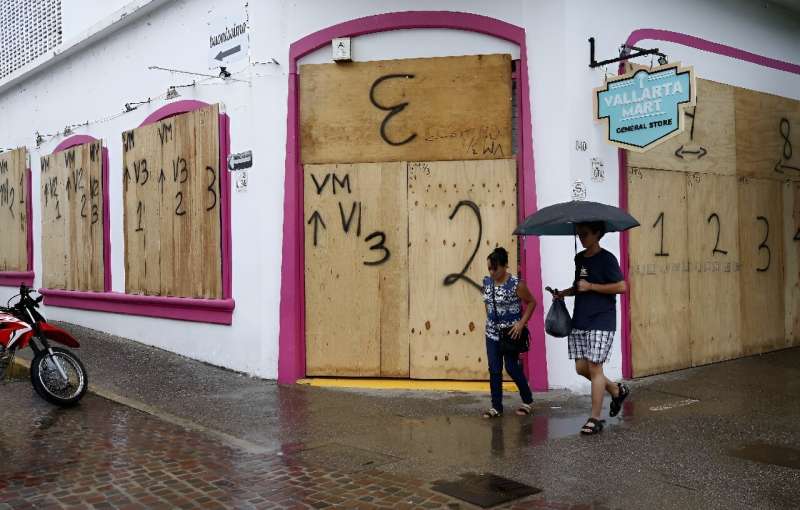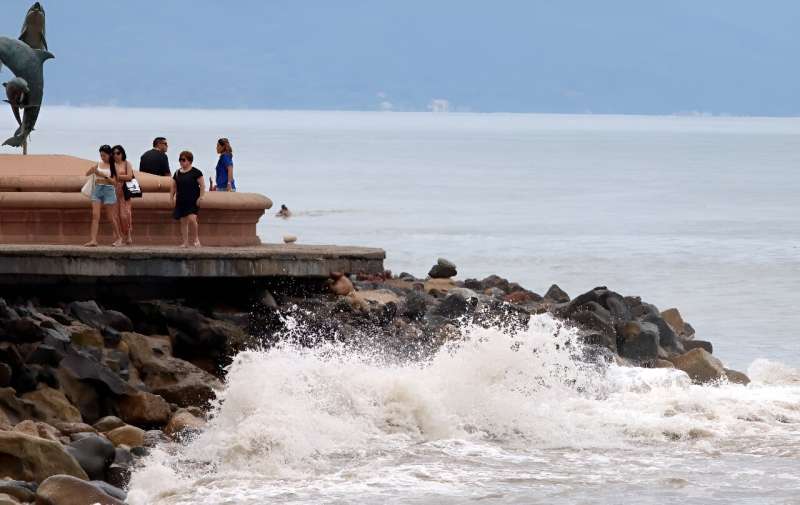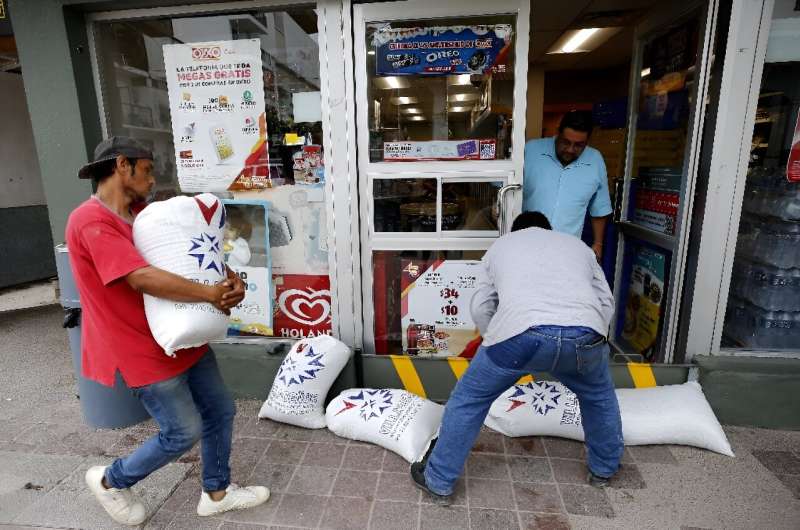
Shopkeepers in Mexico’s beachside city of Puerto Vallarta boarded up windows before Hurricane Lidia made landfall.
Hurricane Lidia made landfall Tuesday on Mexico’s Pacific coast as an “extremely dangerous” Category 4 storm, threatening to bring flooding and mudslides, forecasters said.
The government deployed around 6,000 members of the armed forces to help residents, according to President Andres Manuel Lopez Obrador.
“You must take refuge in safe places—stay away from low areas, streams, rivers and hillsides,” he wrote on social media.
Lidia came ashore near the popular beach resort of Puerto Vallarta, packing maximum sustained winds of around 140 miles (220 kilometers) per hour, the US National Hurricane Center (NHC) said.
“Life-threatening winds and flooding rainfall spreading inland over west-central Mexico,” it said in a bulletin.
Lidia rapidly strengthened to the second-highest category on the five-step Saffir-Simpson scale before reaching land, according to the NHC.
In Puerto Vallarta—a major destination for Mexican and foreign tourists—shopkeepers earlier boarded up windows and piled up sandbags in case of flooding.
Waves crashed ashore, heavy rain drenched the city and strong winds whipped palm trees.
School classes were suspended, businesses closed early and most residents waited out the storm at home or in shelters opened by the authorities, according to AFP reporters.

Tourists stroll along the seafront in the Mexican city of Puerto Vallarta hours before the arrival of Hurricane Lidia.
However, some people were still seen in the streets, taken by surprise by the speed with which the hurricane arrived.
“I was going to go home, but it’s very far away. I’m going to have to take shelter somewhere else. There’s no transportation. It caught me off guard,” said Herson Rodriguez, a 35-year-old fitness trainer and nutritionist.
‘Dangerous storm surge’
Lidia was expected to bring rainfall of up to 12 inches (30 centimeters) to Nayarit, Sinaloa and Jalisco states, the NHC said.
“These rains will likely produce flash and urban flooding, along with possible mudslides in areas of higher terrain near the coast,” it warned.
“A dangerous storm surge is expected to produce significant coastal flooding near and to the south of where the center makes landfall. Near the coast, the surge will be accompanied by large and dangerous waves,” the NHC added.
Hurricanes hit Mexico every year on both its Pacific and Atlantic coasts, usually between May and November.

Workers place sandbags outside a shop in Mexico’s Puerto Vallarta to protect against possible flooding.
Just this week, Tropical Storm Max left two people dead and dozens of houses flooded in the southern state of Guerrero, one of the country’s poorest regions, authorities said Tuesday.
Max made landfall on Monday, causing a river to overflow before dissipating.
One person drowned trying to protect livestock and another died in a road accident during the storm, civil protection official Roberto Arroyo told AFP by telephone.
In August, storm Hilary, which at one point was a Category 4 hurricane, caused one death and damaged infrastructure as it hit the northwestern state of Baja California.
Scientists have warned that storms are becoming more powerful as the world gets warmer with climate change.
© 2023 AFP
Citation:
‘Extremely dangerous’ Hurricane Lidia hits Mexico’s Pacific coast (2023, October 11)
retrieved 11 October 2023
from https://phys.org/news/2023-10-extremely-dangerous-hurricane-lidia-mexico-1.html
This document is subject to copyright. Apart from any fair dealing for the purpose of private study or research, no
part may be reproduced without the written permission. The content is provided for information purposes only.
>>> Read full article>>>
Copyright for syndicated content belongs to the linked Source : Phys.org – https://phys.org/news/2023-10-extremely-dangerous-hurricane-lidia-mexico-1.html































